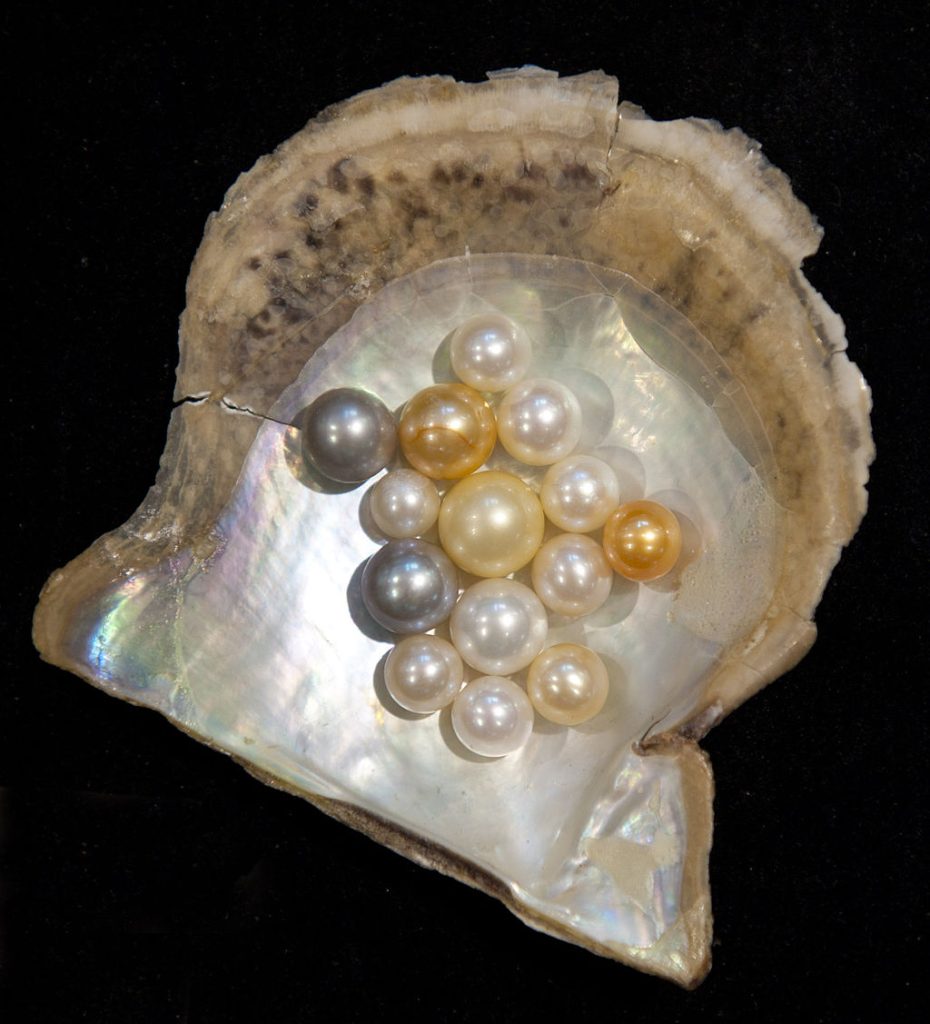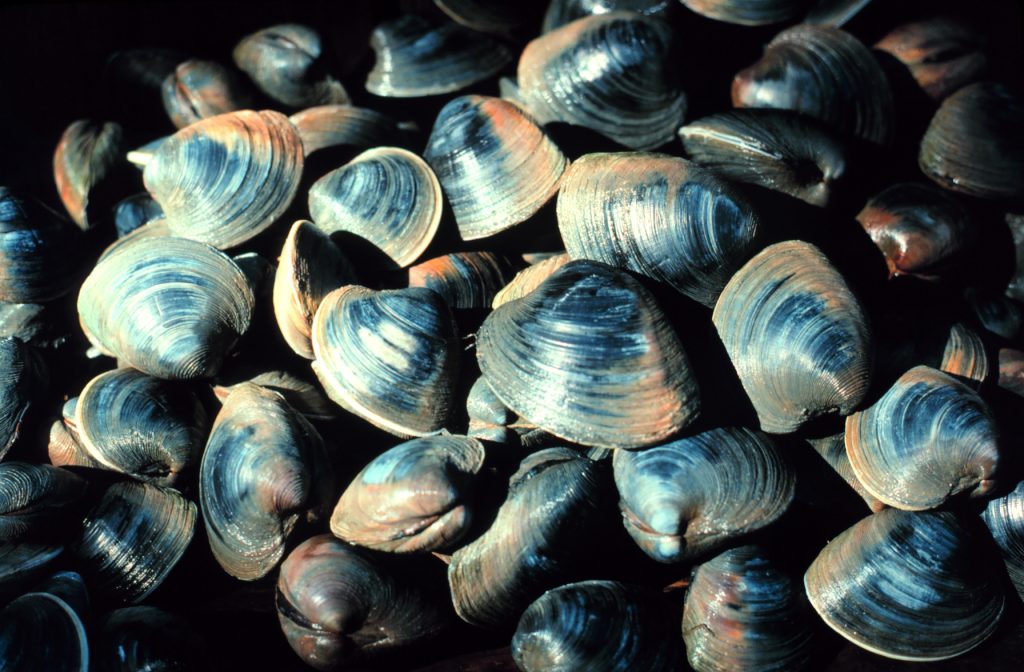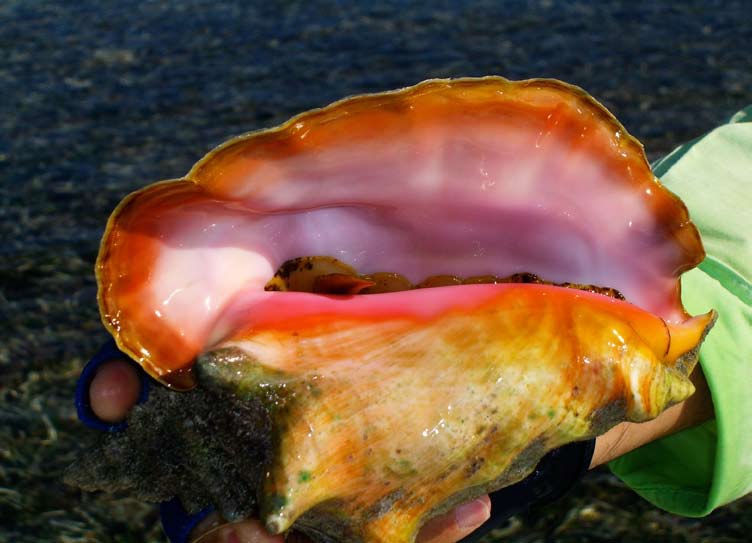When we think of a pearl, we oftentimes conjure up images of hard, white round beads with an iridescent luster, that come from the bivalve known as an oyster. In reality, all mollusks are capable of producing pearls, however, wild pearls are very rare, so most pearls available on the market today are cultured, or farmed, with the help of human intervention. This happens by introducing a foreign body—usually a small bead for cultured pearls, or a pebble or grain of sand in a wild pearl—into the living creature while it is still alive, and waiting for the animal to essentially grow layers of nacre around it, thus creating a pearl. Nacre is the term used to describe the outer layers of the pearl that give it that iridescent luster. Nacre is actually an immune response secreted to protect the organism from injury due to parasites, foreign bodies or physical damage. Once nacre is produced, it forms layers to encapsulate the foreign body, thus producing a pearl. Pearl farmers use that function to their advantage to impregnate the mollusks with tiny beads of mantle tissue from a donor shell, then they wait (6 months all the way up to 7 years for some varieties) for the creature to produce the thin layers of nacre around the bead, in order to generate mass quantities of cultured pearls. The vast majority of most pearls used in jewelry today are cultured.
There are lots of different varieties of pearls available today. Wild (natural) salt water pearls, cultured salt water pearls, freshwater mussel pearls, and cultured freshwater pearls are all very common types of pearls. Some lesser known pearls that stand out for their unique beauty are the quahog pearl and the conch pearl. Let’s explore those last two.
A quahog is a hard shelled clam that is native to the New England waters of the northeast United States. Quahog shells fashioned into beads were used for hundreds of years by the Native Americans as wampum, or money, with the bright purple hues equaling the most value. Occasionally a bit of debris or a foreign body will enter the quahog’s shell and in reaction, it will start producing nacre to protect it from the invading material. The end result is a beautiful purplish pearl that can vary in degrees of color intensity. Since they are rare and no known cultured quahog pearls have been produced, they are quite expensive. Many of these pricy finds have been discovered by accident—usually while eating a meal prepared with the meat found inside the quahog!

A conch pearl is a little bit different. It comes from the marine gastropod known as the Queen Conch, hailing from the warm waters surrounding the Caribbean. These pearls do not have nacre—they instead have a porcelain- like finish and come in a range of colors from white to brown to orange, and their most prized colors, vibrant hues of reds and pinks. Conch pearls are formed by concentric layers of fibrous crystals that give them their unique flame- like appearance, so while these beauties are technically considered pearls, and they are form in a similar way, they have a very different luster. Since the conch produces these pearls deep inside its shell, it is not possible for scientists to culture a conch pearl without harming the animal.

Quahog and conch pearls are valuable in their own right because they are rare and are not created with the help of humans, unlike cultured pearls. They are produced strictly by nature, so to come across one of these exquisite treasures can be truly special.